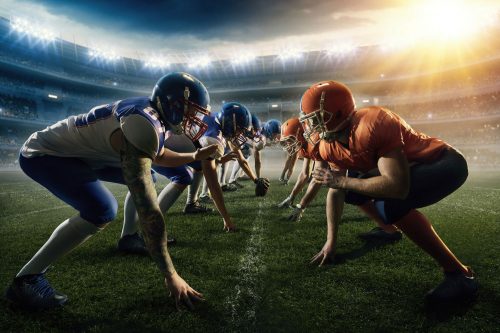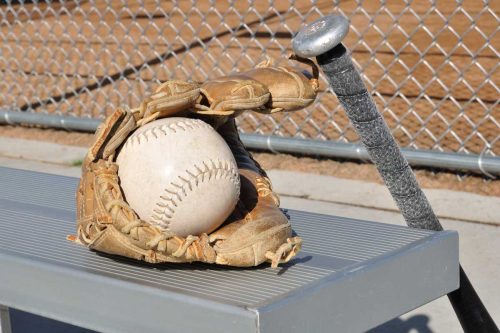Bowling balls are typically made of synthetic polymers that are designed to hook or curve when they roll down the lane. But have you ever wondered how big they are? Let's take a look at what size a bowling ball is.
A regulation bowling ball is typically 8.5 inches in diameter and can weigh between 6 and 16 pounds. Most bowling balls have a uniform weight distribution, meaning that the weight is evenly distributed throughout the ball. In addition, bowling balls have a weighted core surrounded by an outer shell, allowing them to roll down the lane more smoothly.
If you still have some questions about bowling ball size, don't worry. In this post, we'll discuss the topic in more detail. We'll also talk about how bowling balls are made, what size bowling ball the pros use, how to pick the right bowling ball size, and more.

Are All Bowling Balls The Same Size?
Bowling is a fun and popular activity enjoyed by people of all ages. It is a great way to spend time with friends and family or even to meet new people. Bowling is also a great workout, as it requires you to use your whole body to throw the ball.
Whether you are a beginner or a seasoned pro, there are always things you can do to improve your game. To start, you have to pick the right ball.
Bowling balls are all manufactured to be 8.5 inches in diameter, but they can vary in weight from 6-16 pounds. The weight of the ball you choose will depend on your bowling style and preferences.

If you are a beginner, it is recommended that you start with a lighter ball. This will make it easier for you to control your shots and get a feel for the game. Then, as you become more experienced, you can move up to a heavier ball.
Heavier balls typically have more power behind them and can make it easier to knock down all the pins. But, they can also be more difficult to control.
The weight of the ball also affects the amount of hook, or curve, that the ball will have when it rolls down the lane. A heavier ball will typically have more hook than a lighter ball. So, what size bowling ball should you use?
It depends on your bowling style and preferences. If you are a beginner, it is recommended that you start with a lighter ball. Then, as you become more experienced, you can move up to a heavier ball.

How Is A Bowling Ball Made?
Most bowling balls are made of synthetic polymers that are designed to hook or curve when they roll down the lane. But how are they made?
The core of the ball is typically made of metal oxides, such as calcium and iron oxide, and then mixed with a resin to harden the mixture.
The coverstock is the outer layer of the ball that makes contact with the lane. It can be made from a variety of materials such as polyurethane, urethane, and resin. The coverstock affects the amount of hook that the ball will have when it rolls down the lane.
The overstock makes the ball more durable and gives it a shiny finish. In comparison, the core is shaped like a lightbulb to help it roll. Finally, the coverstock is what gives the ball its round shape.
After the ball is made, it is then drilled to fit your hand and match your bowling style. The holes are drilled to allow your fingers and thumb to grip the ball correctly. They also help to balance the weight of the ball so that it rolls down the lane more evenly.
Finally, the ball is painted and given a glossy finish.
What Size Bowling Balls Do The Pros Use?
The pros usually use bowling balls that weigh between 15-16 pounds. These balls have more power behind them and can make it easier to knock down all the pins.

Do You Need A Special Size Ball For Kids?
No, 8.5-inch diameter bowling balls can be used by children. The weight of the ball you choose will depend on your child's bowling style and preferences. If your child is a beginner, it is recommended that they start with a lighter ball. Then, as they become more experienced, they can move up to a heavier ball.
The reason being is that children do not have the same amount of strength as adults. Therefore, a lighter ball will be easier for them to control and throw. The last thing you want is your child to drop a bowling ball on their foot or be frustrated because they can't control the ball.
How Do You Pick The Right Size Bowling Ball?
An easy way to pick the right weight bowling ball is to follow the 10% rule. This means taking your body weight or your child, dividing it by 10, which is the weight you should start with (up to 16 lbs).
For example, if you weigh 150 pounds, you would start with a 15-pound bowling ball. However, if your child weighs 50 pounds, they will start with the lightest weight bowling ball, which is 6 pounds.
However, there are some other things to consider when choosing the right weight of bowling ball. For example, if you just had surgery or are pregnant, you might want to start with a lighter ball. On the other hand, if you have a lot of arm strength, you might be able to handle a heavier ball.
It really just depends on your individual circumstances. The best way to figure out what size bowling ball is right for you is to talk to your local bowling alley or pro shop. They will be able to help you figure out what size and weight of bowling ball are best for you.

What Is The Best Speed To Throw A Bowling Ball?
The best speed to throw a bowling ball is between 16-18 mph for the average player. However, if you play competitively, you might want to try to increase your speed to 20-21 mph.
The faster you throw the ball, the more power you will have behind it. However, it is important to be able to control your shots. If you can't control the ball, you won't be able to bowl accurately.
This is the sweet spot for most bowlers. However, some bowlers might need to adjust their speed depending on their individual circumstances. For example, if you are a beginner, you might want to start with a slower speed. Then, as you become more experienced, you can increase your speed.
The bottom line is that you need to find a speed that you are comfortable with and that you can control. If you can't control the ball, you won't be able to bowl accurately.
Are Bowling Balls Perfectly Round?
No, bowling balls are not perfectly round. Instead, they are slightly oval shaped so that they can roll down the lane more evenly. The holes drilled into the ball also help balance the weight and create a smooth roll.
It would be very difficult to control if you bowl with a perfectly round ball. The ball would veer off to one side or the other and would be very difficult to keep on a straight path.
The oval shape of the bowling ball and the holes that are drilled into it help to create a smooth roll and make it easier to control.

How Much Weight Is Lost When Drilling A Bowling Ball?
The amount of weight lost when drilling a bowling ball depends on the size of the hole drilled—the larger the hole, the more weight that will be lost.
When they are drilled, most bowling balls lose between 1-2 ounces of weight. However, some people choose to drill larger holes in their balls so that they can be lighter and easier to throw. This is especially common for beginners.
Drilling a hole in your bowling ball will not affect its performance as long as the hole is not too large. The only time that it might have an effect is if you are trying to throw the ball with more speed than you are physically capable of.
Have a pro shop check your ball after drilling to ensure it is still within regulation size.
Final Thoughts

While the diameter of a bowling ball is virtually the same for all bowlers, the weight of the ball will vary from person to person. Therefore, you should choose a weight that is comfortable for you to throw and that you can control.
The best way to figure out what size bowling ball is right for you is to talk to your local bowling alley or pro shop.
Want to learn more about bowling? Here are some resources that can help:
5 Types Of Bowling Balls For Different Lane Conditions
How Much Does It Cost To Go Bowling? [And Should You Buy Your Own Gear]
How Long Does A Reactive Resin Bowling Ball Last? (Compared To Urethane)






